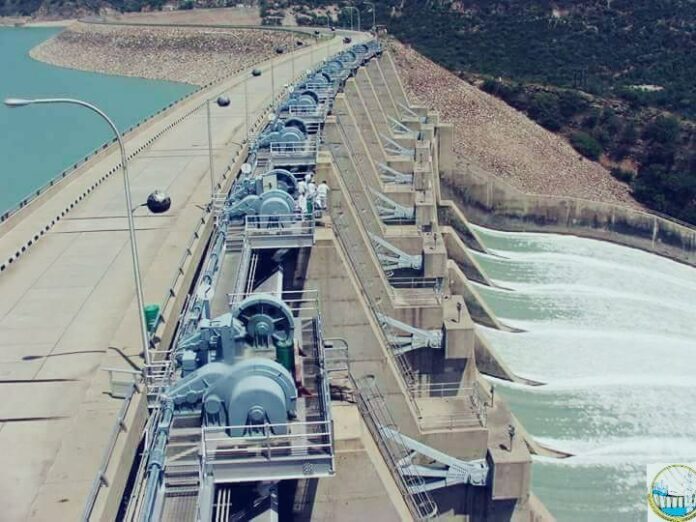ISLAMABAD: Pakistan’s major water reservoirs are running critically low, with the Indus River System Authority (IRSA) reporting alarmingly reduced storage levels amid a worsening nationwide water shortage ahead of the Kharif cropping season.
According to the Indus River System Authority’s (IRSA) daily water report issued on April 7, 2025, storage at the country’s three major reservoirs — Tarbela, Mangla, and Chashma — remains well below capacity.
Tarbela is storing only 0.081 million acre-feet (MAF) of water, with its current level at 1410.07 feet, barely above its minimum operational level of 1402 feet. The dam’s maximum conservation level is 1550 feet.
Mangla is holding 0.248 MAF against a capacity of 7.4 MAF, with the current level at 1090.80 feet. Chashma reservoir also has a limited storage of just 0.072 MAF.
Despite moderate river inflows — 18,600 cusecs in the Indus at Tarbela and 21,800 cusecs in the Jhelum at Mangla — the current storage does not meet the seasonal requirements, particularly for early sowing of cotton and other Kharif crops in Sindh and southern Punjab.
Provinces have already conveyed their concerns to the federal government, urging the government to review water distribution plans to ensure minimum irrigation supplies for critical agricultural zones.
Sindh has repeatedly warned that water shortages in April and May could delay sowing operations, affecting crop yield and economic output. Punjab irrigation officials have also flagged possible cutbacks to canal supplies if reservoir levels do not improve.
IRSA is continuing to monitor flows at all key locations. On Monday, inflows and outflows at Jinnah Barrage were reported at 32,000 and 28,900 cusecs, respectively; Chashma recorded inflows of 32,200 cusecs and outflows of 32,000 cusecs.
However, downstream at Kotri, the outflow was just 200 cusecs against an inflow of 4,600 cusecs — an indication of restricted flow towards the tail-end regions.
IRSA officials said that current allocations were based on actual river flows and reservoir conditions, adding that any further distribution would depend on rainfall patterns and snowmelt in the coming weeks. So far, no major improvement has been recorded in upstream inflows, and without significant rain or glacial contribution, provinces may have to revise their cropping plans for early Kharif.
Khalid Rana, a spokesman for IRSA, speaking to Profit, stated that the ongoing water shortage issue will likely be resolved within the next 48 hours, as water catchment areas are showing positive trends and glacier melt has begun. He explained that the country typically faces this shortage during these months each year.
Currently, water is primarily being supplied for drinking purposes, as the wheat crop has matured in most areas. Many canals in wheat-growing regions have been closed, while water supply continues in areas where cotton is being cultivated.
“We hope that the country’s reservoirs and rivers will see increased water levels in the coming days,” said IRSA’s spokesman.
It is pertinent to mention that with reservoir levels at a seasonal low and river flows unable to replenish them fast enough, the federal and provincial governments now face the dual challenge of managing water scarcity and safeguarding food security.
IRSA is expected to hold a consultative session with all stakeholders later this week to review the situation and possible adjustments in provincial allocations.
























